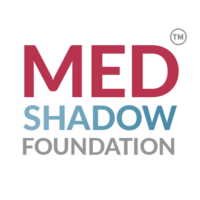A 54-year-old man returned from a two-week trip to Southeast Asia to his home in Canada with a mysterious ailment. His serum calcium and creatinine levels, which measure kidney health, were through the roof. His doctor referred him to Joanne Bargman, M.D., FRCPC, a kidney specialist at Toronto General Hospital.
Dr. Bargman ran a battery of tests, but the results were inconclusive. Upon further questioning, the man revealed that he had been taking a vitamin D supplement in daily doses up to 20 times the recommended dietary allowance for years before his trip, where he spent hours in the sun every day. Doctors concluded that he was suffering from vitamin D toxicity, which can cause calcium to build up in the body, posing risks including kidney stones, declining bone health, and even kidney failure.
After the man reduced his vitamin D supplementation, his calcium levels stabilized. According to Dr. Bargman (who detailed this case in a 2019 medical paper), at the time of this story’s publication, his kidney function remains stable, and he is doing well.
“I always tell my patients that a little bit of a vitamin is good,” says Dr. Bargman, “but don’t think more is better.”
The Debated Importance of Vitamin D
Vitamin D toxicity is considered very rare, affecting approximately 1 in 100,000 people in the U.S.every year. After Dr. Bargman published a case report on the man in an academic journal, some doctors questioned her diagnosis.
Among those who challenged Dr. Bargman’s assessment was Michael Holick, Ph.D., M.D., an American endocrinologist known for his research on vitamin D. He argued that the man’s symptoms were caused by his bladder cancer (which Dr. Bargman also discovered). But Dr. Bargman disagreed; after all, the man’s kidney issues were resolved by reducing his vitamin D intake before his cancer was operated on, she says.
Disagreement is not uncommon when it comes to vitamin D. As one of the 13 vitamins deemed essential to human health, few experts debate its importance, but have struggled to reach a consensus on what constitutes an optimal level and whether taking extra provides any added protection.
Still, nearly 20% of American adults take vitamin D supplements, and sometimes much more than the recommend (600 to 800 international units (IU), or 15 to 20 micrograms per day). Many benefits have been proposed, but in healthy people, vitamin D supplementation has yet to consistently hold up under rigorous scientific scrutiny.
The Sunshine Vitamin: How Vitamin D Works In the Body
The bulk of our vitamin D is produced in the skin following sun exposure. When ultraviolet light hits the skin, it triggers a chemical reaction that generates vitamin D3. The liver then converts vitamin D3 into 25-hydroxyvitamin D (25-OH-D), which circulates in the blood. Vitamin D levels in the human body are quantified based on 25-OH-D, but that molecule does not become active until the kidneys convert it into 1,25-dihydroxyvitamin D3 (1,25(OH)2D).
Supplements and fortified foods often contain both vitamin D3 and vitamin D2, the form produced by plants, and both can be metabolized into the active molecule. Certain foods, including mushrooms and fish, are also rich in vitamin D. Dietary sources of vitamin D can help support adequate levels during the winter when natural stores dip due to limited UV exposure.
Vitamin D became known as a promising therapeutic agent in the early 1900s, after researchers discovered that sunlight helped cure rickets, a disease that causes children’s bones to become weak and soft. It wasn’t until the 1930s that scientists connected the therapeutic benefits of sunlight to vitamin D and began synthesizing both vitamin D2 and vitamin D3 in the lab. It took another 40 years for researchers to understand the complete biological pathway of the vitamin, as Dr. Holick and colleagues published their seminal paper in 1980.
To this day, the most well-established role of vitamin D is to facilitate calcium absorption, which helps build strong bones. Without adequate vitamin D and calcium, a person is at risk of developing osteoporosis, a disease that increases susceptibility to bone fractures.
However, researchers have also proposed that vitamin D supports the immune system, regulates aging, and protects against diseases, including cancer, cardiovascular disease, and diabetes, which is where things get a bit more complicated.
Guideline Wars: Nutrition Vs Therapy
One of the most debated questions is whether taking vitamin D supplements can extend its benefits beyond bone health to prevent or treat chronic diseases.
The recommended vitamin D intake for adults between 1 and 70 years old is 600 international units (IUs) per day, and 800 IUs for adults over 70, as established in 2011 by the Institute of Medicine (IOM; now the National Academy of Medicine), an American nonprofit and non-governmental organization of doctors. The committee also recommended against regular testing for vitamin D deficiency, noting that most Americans already meet this cutoff.
According to committee members, the IOM referenced existing literature on bone health to formulate their recommendations, which were intended for nutritional, not therapeutic, purposes. “It’s not a recommendation for treatment,” says John Gallagher, M.D., an endocrinologist at the Creighton University Medical Center, who was one of the reviewers of the IOM report. The committee convened to address nutritional questions, like how much vitamin D Kellogg’s could safely add to Corn Flakes. “There are a lot of stakeholders involved with nutrition, but we were looking for adverse events, not therapeutic benefits,” adds Dr. Gallagher.
“The Institute of Medicine is very conservative with its recommendations because of the fact that with most vitamin D research, there’s no safety data,” he continues.
Almost as soon as they were drawn up, the IOM recommendations met swift resistance from the Endocrine Society, an international medical group focused on hormones and metabolism, whose vitamin D guidelines committee at the time was chaired by Dr. Holick — the same researcher who challenged Dr. Bargman’s case study.
Three months after the IOM released its report, Dr. Holick and his colleagues at the Endocrine Society published a paper that set a vastly different benchmark for vitamin D circulating in the blood, writing that the minimum level of 25-OH-D should be 30 ng/mL — 1.5 times higher than the IOM’s recommended minimum of 20 ng/mL. According to Dr. Gallagher, the Endocrine Society has no legal responsibility for its guidelines and included committee members with ties to the dietary supplements industry.
Unlike the IOM’s recommendations, which focused on a generally healthy population, the Endocrine Society guidelines were intended to inform clinical care for people with inadequate vitamin D or those who were at risk of developing deficiency, says Daniel Bikle, M.D., Ph.D., a professor of medicine and dermatology emeritus at the University of California, San Francisco. Both IOM and the Endocrine Society created the guidelines based on existing research, but “they interpreted the data differently,” notes Dr. Bikle.
For example, the Endocrine Society argued — citing additional research — that people are getting less exposure to the sun and drinking less vitamin D-fortified milk than in the past; hence, raising the recommended vitamin D level may compensate for these trends.
Following the 2011 release of the competing guidelines, perceptions of vitamin D deficiency began to shift. While the IOM stated that an RDA of 600 IUs of vitamin D should meet the needs of at least 97.5% of the population between the ages of 1 and 70, the Endocrine Society advised anyone older than 18 to take at least 1,500 to 2,000 IUs to meet the higher benchmark, “especially for patients… at risk for vitamin D deficiency.” For adults with an established deficiency, the Endocrine Society recommended up to 10,000 IUs per day.
The recommendations contradicted the upper limits set by the IOM, whose committee cautioned against consuming more than 4000 IUs of vitamin D per day due to insufficient safety data.
“Frankly, taking that degree of supplement is not based on any science,” says Sundeep Khosla, M.D., an endocrinologist who studies age-related bone loss at the Mayo Clinic.
As the Endocrine Society guidelines caught the public’s attention, demand for vitamin D blood tests skyrocketed, as did supplement sales. According to a New York Times investigation, vitamin D supplements generated $936 million in sales in 2017, a nine-fold increase from the previous decade, before those guidelines were published. In 2016, doctors ordered more than 10 million lab tests to check for vitamin D deficiency, incurring more than $360 million in medical expenses.
The same New York Times article also revealed Dr. Holick’s financial ties to supplement and lab testing companies, noting that he leveraged his credentials to promote businesses that were funding his work. While it’s not uncommon to tap people with industry ties as experts for supplement guidelines committees, Dr. Bikle argues that Dr. Holick is a “zealot” with a definitive bias that was reflected in the 2011 Endocrine Society guidelines.
“I think a lot of people felt that the [Endocrine Society] 2011 committee had gone overboard,” adds Dr. Gallagher.
Regardless, both the 2011 IOM and Endocrine Society guidelines were limited by studies that are based on association, which reveal correlation, not causation. In other words, low vitamin D levels may coincide with some of the health conditions being studied, but that is not necessarily the cause. Many of the studies were also done in animal and cellular models instead of humans, notes Dr. Bikle.
“After the Endocrine Society guidelines, many reference labs set their laboratory low limit at 30 [ng/mL], which meant that many more people would [be considered to] have an abnormal vitamin D level,” says Clifford Rosen, M.D., the director of clinical and translational research at the Maine Medical Center Research Institute, who helped draft the IOM recommendations. “That leads to not just more supplementation, but more testing,” he adds. “We spent a lot of money.”
In 2011, Medicare spent $224 million on vitamin D testing. By 2015, the figure rose to $337 million. Researchers say that many of those tests were administered to people without a qualifying underlying condition, such as osteoporosis, that would call for screening.
Unnecessary testing can divert precious resources, researchers note, estimating that healthcare overuse accounts for up to 8% of all healthcare spending and 29% of Medicare spending.
A Hard Molecule to Measure: Conflicting Research About Vitamin D Benefits
The uptick in testing has highlighted another long-standing concern for vitamin D researchers:
discrepancies in testing results, says Christopher Sempos, Ph.D., a public health and nutritional epidemiologist and former coordinator of the Vitamin D Standardization Program at the National Institutes of Health. The circulating form of vitamin D, 25-OH-D, “is a hard molecule to measure,” he says, and the results vary depending on the type of test.
Based on a recent analysis by The National Health and Nutrition Examination Surveys (NHANES), which reviewed the health data of 71,685 individuals, 41% of the US population had 20 to 30 ng/mL of 25-OH-D; only 34% had more than 30 ng/mL. But, Dr. Sempos says, “even the best assays [tests] have a lot of error.”
Some studies have shown that the standard methods used in clinical labs to measure this molecule often mistakenly detect other metabolites of vitamin D, which can skew the results. There have been efforts by Dr. Sempos and others to standardize the measurement of vitamin D, but it will likely be difficult to achieve a consensus without uniform methods and large datasets to analyze, he adds.
Researchers have, however, taken recent strides towards achieving this goal. The longest and most comprehensive study of vitamin D to date, the Vitamin D and Omega-3 Trial (VITAL), announced its first findings in 2018. It investigated links between vitamin D and heart disease, stroke and cancer in 25,871 men and women in the U.S.
Researchers who had been skeptical of the purported benefits viewed the trial results as confirmation. “We can say pretty clearly that for the major diseases, there’s probably not much impact in prevention, and probably very little in terms of treatment,” says Dr. Rosen, whose 2022 analysis of the VITAL findings noted very few benefits for any group.
During the VITAL study, participants received either 2000 IU of vitamin D or a placebo daily foran average of 5.3 years. The 2018 findings showed that, in general, vitamin D supplementation did not reduce a person’s risk of developing cancer or cardiovascular disease. However, an updated analysis in 2020 exploring the impact of vitamin D on cancer outcomes found that supplementation did not lower the incidence of cancer but might reduce cancer mortality. The researchers noted that more studies are needed to determine how this works and who might benefit from supplementing with vitamin D.
Still, some experts have pointed out that VITAL studied the effects of vitamin D in a generally healthy population that likely had adequate levels to begin with. The trial did not specifically examine whether supplementation could help people who are deficient or managing chronic health conditions.
“What we don’t have are studies that are directed at those with low, let’s say 15 ng/mL levels [of 25-OH-D],” says Dr. Bikle. He adds that the lack of data may stem from an ethical dilemma: In theory, giving vitamin D to individuals with “low” vitamin D levels could benefit their health, but to study the effects of low vitamin D, participants must be kept at a deficit. While Dr. Bikle thinks finding out is worth the risk, not everyone agrees, even though this population may benefit most from vitamin D supplementation, he says.
Researchers have since used the VITAL trial data to investigate other questions as well. In 2022, a study published in the New England Journal of Medicine explored whether vitamin D supplementation of 2,000 IU per day over 5 years reduced the risk of fracturing a bone in healthy people and people with osteoporosis. Contrary to popular belief, the study found no such link. Taking more vitamin D did not make it any less likely that VITAL study participants would suffer a fracture.
Dr. Khosla says the results did not surprise him. “They were studying a population that was well above any threshold for vitamin D deficiency,” he said. “I don’t think that can be extrapolated to the patient in your office with osteoporosis,” adds Dr. Khosla, who continues to recommend moderate vitamin D supplementation to his patients.
According to Dr. Khosla, vitamin D supplements help osteoporosis drugs work by enabling calcium absorption, but for the most part, the jury is still out.
Case By Case: Who Might Actually Benefit From Vitamin D Supplements
In 2024, the Endocrine Society revised its vitamin D guidelines, acknowledging the limitations of vitamin D supplementation studies. Dr. Holick was not part of the new committee; in fact, most members were newly appointed, including Dr. Bikle.
The revised Endocrine Society guidelines differ from its 2011 edition, aligning instead with the original parameters set by the IOM. Dr. Bikle says the new committee “accepted the fact” that the IOM guidelines were “probably pretty good for the general population.” The revision was based on recent randomized controlled trials in humans, the experimental gold standard, instead of animal and association studies, as with the old guidelines.
As for optimal vitamin D levels circulating in the blood, “We just don’t have the data,” says Dr. Bikle. Some clinicians believe that vitamin D levels of 20 ng/mL and higher are sufficient, and others, including Bikle, think 30 ng/mL should be the minimum.
“We agree to disagree on what the level should be, but quite frankly, neither one of us has solid data to back up our claim,” Dr. Bikle adds.
Both IOM and Endocrine Society experts now agree that a daily vitamin D dose of 600 to 800 IU is sufficient for a healthy adult with regular sun exposure. Despite the congruence between guidelines, Dr. Bikle notes that there are still exceptions for certain individuals.
Underlying health conditions, skin tone, cultural practices, and geography can all impact vitamin D levels, he says. For example, those who live in areas with a long winter period tend to acquire less vitamin D. Similarly, fully-covered clothing appropriate in certain cultures may also prevent the skin from being exposed to the sun. In these instances, it might make sense to get a vitamin D test or take a vitamin D supplement.
People with obesity and osteoporosis may also need more regular monitoring to ensure they are getting enough vitamin D. Excess fat tissue can bind vitamin D and prevent it from being absorbed in the body. Taking certain drugs, such as anticonvulsants, can also interfere with vitamin D absorption, he adds.
Because melanin, the pigment in skin, acts as a shield against UV rays, people with darker skin tend to have lower vitamin D levels. This is also true for those whose daily activities prevent them from being exposed to the sun or whose diet is not balanced.
To make sure people hit the daily recommended dose of vitamin D, Dr. Khosla recommends taking a supplement. “There’s very little downside to taking a multivitamin a day to ensure that you don’t get vitamin D deficient, plus adequate calcium,” he says.
Dr. Rosen agrees, but cautions people against exaggerating the benefits. “There’s no reason not to take it,” he says, as long as you keep your expectations in check. “If you expect that [vitamin D] is going to make you live longer or not develop heart disease, or cancer, or diabetes, that’s a problem.”
{All individuals interviewed for this story confirmed they have no financial disclosures to declare]






